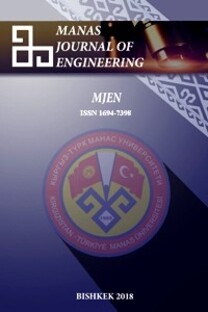Learning Management System Implementation. Case Study on User Interface Configurations.
Using ICT, it is possible to build an educational process that will not only be independent of time and space, but also provide quick access to educational materials. In this case, educational material can be not only in a readable format, but also in the form of video materials. In the Kyrgyz Republic, the use of distance learning can be helpful to solve a number of problems. The focus of this study is the usability problems faced in Learning Management System, as well as to investigate factors influencing usage of the system. In the frame of the study, we have used several methods, including survey, the RAM usage analysis and loading time compression tests. Results suggested that the LMS usage could be widely adopted in the region. In addition, within the analysis of usage problems, decrease the loading time in Moodle by organizing the course resources, and hence improving the loading time and stopping users from abandoning the site was done.
___
- [1] Conde, M. Á., García-Peñalvo, F. J., Rodríguez-Conde, M. J., Alier, M., Casany, M. J., & Piguillem, J. (2014). An evolving Learning Management System for new educational environments using 2.0 tools. Interactive Learning Environments, 22(2), 188-204.
- [2] Chavan, A., & Pavri, S. (2004). Open-source learning management with moodle. Linux Journal, 2004(128), 2.
- [3] Ismailova R., Muhametjanova G. “Cyber crime risk awareness in Kyrgyz Republic,” Information Security Journal: A Global Perspective 25 (1-3), 32-38, 2016
- [4] Kakasevski, G., Mihajlov, M., Arsenovski, S., & Chungurski, S. “Evaluating usability in learning management system moodle,” In ITI, Vol. 2008, p. 30, 2008, June
- [5] Koole, M., McQuilkin, J. L., & Ally, M. (2010). Mobile learning in distance education: Utility or futility? Journal of Distance Education, 24(2), 59-82
- [6] Matthews, D. “ The origins of distance education and its use in the United States,” T.H.E. Journal, 27(2), 1999
- [7] Moodle, 2011
- [8] Moodle, 2018
- [9] Muhametjanova G., Ismailova R. Students’ Level of Readiness to Use Social Media as Educational Tool in Kyrgyz Republic. Journal of Educational Multimedia and Hypermedia, in press
- [10] Nah, F. F. H. “A study on tolerable waiting time: how long are web users willing to wait?” Behaviour & Information Technology, 23(3), 153-163, 2004
- [11] Natda, K. V. “Responsive web design,” Eduvantage, 1(1), 2013
- [12] Nurakun Kyzy Z., Begimkulov Ch., Ismailova R., Dündar H. “Evaluation of Distance Education Applications in the Kyrgyz Republic Universities,” International Online Journal of Educational Sciences 9 (3), 653-662, 2017
- [13] Nurakun Kyzy Z., Ismailova R., Dündar H.” Learning management system implementation: a case study in the Kyrgyz Republic,” Interactive Learning Environments 26 (8), 1010-1022, 2018
- [14] Pan, G., & Bonk, C. J. “The emergence of open-source software in China,” The International Review of Research in Open and Distributed Learning, 8(1), 2007
- [15] Paulsen, M. F. “Online education systems: Discussion and definition of terms.” NKI Distance Education, 202, 2002
- [16] Ruiz, J. G., Mintzer, M. J., & Leipzig, R. M. (2006). The impact of e-learning in medical education. Academic medicine, 81(3), 207-212.
- [17] Sife, A., Lwoga, E., & Sanga, C. (2007). New technologies for teaching and learning: Challenges for higher learning institutions in developing countries. International journal of education and development using ICT, 3(2).
- [18] Ssemugabi, S. “Usability evaluation of a web-based e-learning application: a study of two evaluation method”, Ph.D. dissertation, Information Systems Dept., Univ. of South Africa, 2009.
- [19] w3school, 2018
- ISSN: 1694-7398
- Yayın Aralığı: 2
- Başlangıç: 2001
- Yayıncı: KIRGIZİSTAN-TÜRKİYE MANAS ÜNİVERSİTESİ
